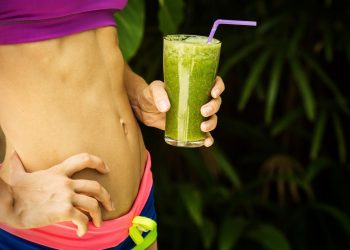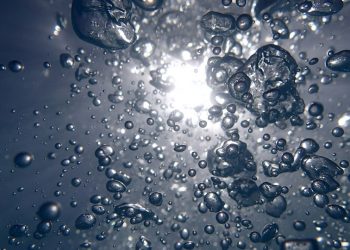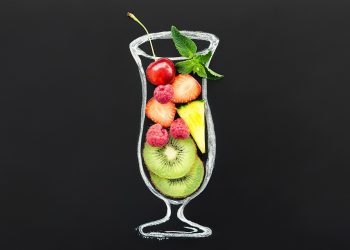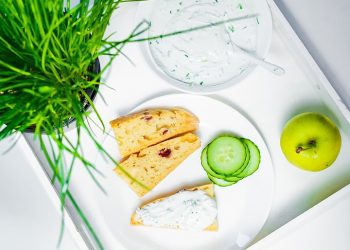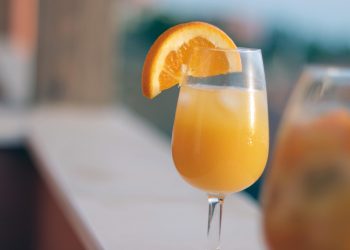Muscle soreness bananas are more than a snack; they’re a simple, science-backed tool that helps your body recover after tough workouts. In plain terms: this is about how a humble fruit replenishes fuel, soothes muscles, and gets you back to the life you love sooner. If you train hard, chase kids, or simply want to feel less bruised by your own ambition, this matters to you.
Contents
- Muscle Soreness Bananas: How They Work
- 1. Replenish Glycogen Quickly
- 2. Replace Electrolytes To Reduce Cramping
- 3. Lower Inflammation With Antioxidants
- 4. Relax Muscles With Magnesium And B Vitamins
- 5. Improve Gut Health And Systemic Recovery
- 6. Boost Mood And Reduce Perceived Pain
- 7. Practical Snack That Encourages Smart Habits
- Timing, Ripeness, And Pairings That Work
- How Many And Which Bananas?
- Real Examples From Real People
- What The Research Says
- Bottom Line
- FAQ
Muscle Soreness Bananas: How They Work
You pick up a banana because it’s easy. But behind that peel is a powerful combo of carbohydrates, electrolytes, and bioactive compounds that target the mechanics of recovery. That’s why the phrase muscle soreness bananas isn’t a gimmick — it’s a shorthand for a practical, immediate fix.
Here’s the plain truth: when your muscles scream after a workout, they’re out of fuel and a little angry. Bananas help refill the tank. They also calm the electrical storms in your cells so cramps and tightness settle faster. Think of a banana as a short, effective repair visit for your body.
1. Replenish Glycogen Quickly
After exercise, your muscles are hungry for glycogen. Bananas deliver easily digestible carbohydrates that raise insulin just enough to push glucose into muscle cells. That means faster refueling and less time spent sore and sluggish.
Pair a banana with a little protein and you amplify recovery. A banana with Greek yogurt, a scoop of protein powder, or a handful of nuts helps muscle repair while that glycogen window is open. Practical, tasteful, efficient.
2. Replace Electrolytes To Reduce Cramping
Bananas are famous for potassium, and for good reason. Potassium is essential for nerve signaling and muscle contraction. When you sweat, you lose sodium and potassium and that imbalance fuels cramps and tightness.
Eating a banana post-workout restores electrolyte balance in a natural way. It’s not a full sports-drink replacement for ultra-endurance events, but for most gym sessions and runs, a banana does the job. That simple replacement reduces the chance of waking up stiff the next day.
3. Lower Inflammation With Antioxidants
Muscle soreness often follows inflammation sparked by microscopic damage during exercise. Bananas bring antioxidants like dopamine and vitamin C to the party. These compounds help blunt oxidative stress and support tissue recovery.
Research shows antioxidant-rich foods can support post-exercise recovery. Eating a banana is a low-cost, low-effort way to give your cells an anti-inflammatory nudge. When you combine this with protein, you give your body both building blocks and protection.
4. Relax Muscles With Magnesium And B Vitamins
Bananas supply modest amounts of magnesium and B vitamins — both key for muscle relaxation and cellular energy production. Magnesium helps muscles relax after contracting, which lowers tension and the perception of soreness.
If you feel tight after a hard session, grab a banana. Over time, consistent small doses of magnesium via whole foods can make a difference in how quickly you recover and how often you feel knotted and pained.
5. Improve Gut Health And Systemic Recovery
The type of carbohydrate in bananas changes with ripeness. Greenish, slightly unripe bananas contain resistant starch, a prebiotic that feeds beneficial gut bacteria. A healthier gut reduces systemic inflammation, which in turn eases muscle soreness.
Ripe bananas provide quick sugars for immediate recovery. Both stages have uses: green for longer-term gut support, ripe for instant energy. Use what your body needs in the moment and over time you’ll notice fewer flare-ups of generalized soreness.
6. Boost Mood And Reduce Perceived Pain
Recovery isn’t only physiological; it’s psychological. Bananas contain tryptophan precursors that support serotonin production, helping lower the feel of pain and lift mood after intense effort.
When you eat a banana and feel better emotionally, you also move more freely, sleep better, and follow through on small recovery rituals. Those behavioral wins are huge. A little lift in mood equals a real reduction in reported soreness.
7. Practical Snack That Encourages Smart Habits
You can measure metabolic pathways in a lab, or you can eat what’s practical. Bananas are portable, inexpensive, and non-fussy. That means you’re more likely to refuel immediately after exercise instead of skipping recovery or grabbing junk.
Make a habit of pairing a banana with a protein source within 30 to 60 minutes post-workout. Over weeks, that habit compounds. Fewer workouts derailed by soreness. Faster returns to peak performance. Better long-term progress.
Timing, Ripeness, And Pairings That Work
Timing matters. Eat a banana within the first hour after exertion for optimal glycogen restoration. If you need a fast energy lift during a long session, a ripe banana gives you simple sugars that digest quickly. If you want gut benefits and slower release, opt for a greener banana.
Pairings are where strategy wins. Try a banana with cottage cheese for sustained protein and carbs. Blend a banana into a post-run smoothie with whey protein and spinach for antioxidants plus recovery fuel. Small changes like these turn the simple act of eating a banana into a multi-pronged recovery protocol.
How Many And Which Bananas?
One medium banana is enough for most recovery needs: about 100–120 calories of mostly carbs, plus a good hit of potassium and other micronutrients. If you’ve done a long run or a heavy lifting session, two bananas or a banana plus a carb-rich side may be sensible.
Variety matters. Cavendish bananas are the most common and broadly effective. If you want extra resistant starch, seek greener bananas. If you need immediate fuel, pick a very ripe, spotty banana.
Real Examples From Real People
I’ve seen runners swap a sugary bar for a banana after a 10K and report less bloating and steadier energy afterward. A weightlifter I coach replaces a post-workout soda with a banana and water and notices fewer cramps and cleaner recovery the next day.
Athletes often cite bananas as one of those tiny, consistent choices that add up. That’s the charm — it’s accessible, believable, and repeatable. You can do this tomorrow; no prepping required.
What The Research Says
Scientific studies show bananas are a practical energy and electrolyte source during and after exercise. Clinical nutrition literature supports carbohydrate-protein combinations for glycogen restoration. Sports medicine sources discuss potassium’s role in muscle function and highlight that whole foods are a valid recovery tool.
If you want to dig deeper, reliable medical and sports nutrition resources provide a clear view: bananas are not a miracle cure, but they’re a potent, evidence-backed ally for soreness and recovery.
Bottom Line
Bananas are one of the simplest, safest, and most effective tools you can use to combat post-exercise pain. They replenish glycogen, restore electrolytes, reduce inflammation, support gut health, relax muscles, and even improve mood — all with zero fuss. Use ripe bananas for quick fuel, greener ones for gut benefits, and always pair with protein when possible. Make bananas a predictable part of your recovery habit and you’ll notice fewer missed workouts and more consistent progress in your training and life.
Be kind to your body: peel a banana, pair it thoughtfully, and watch the small recovery wins stack into big results.
FAQ
Can bananas alone fix severe muscle soreness?
Bananas help by addressing several drivers of soreness, but they’re not a standalone cure for severe muscle damage. For intense or prolonged pain, combine bananas with protein, rest, hydration, compression or elevation when needed, and consult a healthcare professional if pain persists.
Are green or ripe bananas better for recovery?
Both have roles. Green bananas contain resistant starch that supports gut health; ripe bananas provide quick sugars for immediate glycogen refill. Choose based on whether you need instant energy or longer-term gut support.
How soon after workouts should I eat a banana?
Aim for within 30 to 60 minutes post-workout to maximize glycogen restoration and muscle repair. Pair your banana with a protein source when possible to optimize recovery.
Do bananas replace sports drinks for endurance events?
Bananas can be an effective, natural alternative for many athletes, especially for shorter events. For ultra-endurance efforts where precise sodium replacement is critical, consider combining bananas with sport-specific hydration to ensure adequate sodium intake.
Can I eat bananas every day for recovery?
Yes. For most people, daily bananas are a safe, nutritious way to support recovery, energy, and overall health. Watch portion sizes and pair with varied protein and vegetables for a balanced diet.
References
The USDA FoodData Central provides detailed nutrient profiles for bananas and other foods (http://www.nal.usda.gov/fnic/).
Harvard Health explains electrolyte balance and the role of potassium in muscle function (http://www.health.harvard.edu/).
The National Institutes of Health hosts research and reviews on nutrition and exercise recovery that discuss carbohydrate timing, electrolytes, and antioxidants (http://www.ncbi.nlm.nih.gov/).
Get Your FREE Natural Health Guide!
Subscribe now and receive our exclusive ebook packed with natural health tips, practical wellness advice, and easy lifestyle changes — delivered straight to your inbox.



